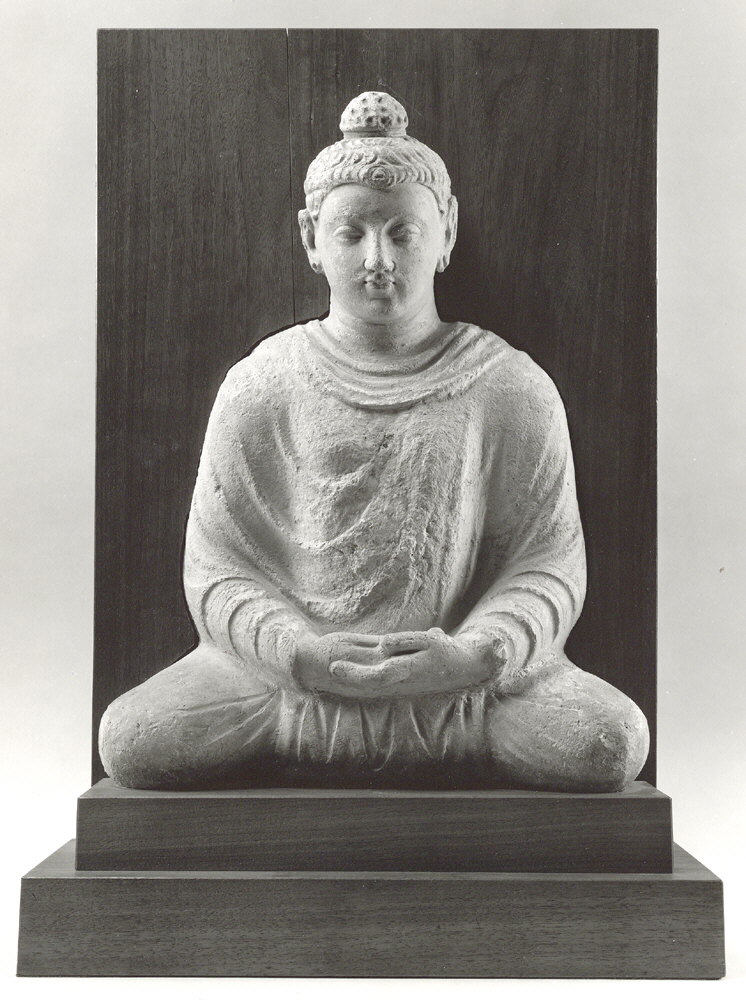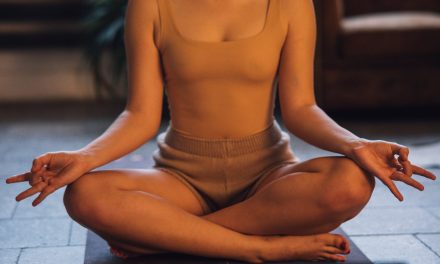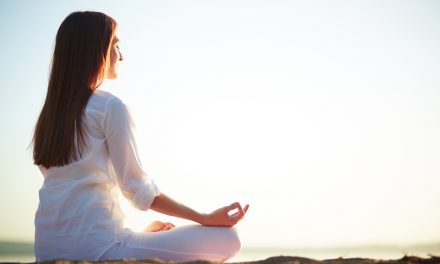If you’ve ever found yourself longing for a sense of calm amidst the chaos of everyday life, “Unlocking Inner Peace: A Comprehensive Guide To The Art Of Meditation” is the perfect resource for you. This comprehensive guide is designed to help individuals of all backgrounds and experience levels tap into the transformative power of meditation. Whether you’re a beginner looking to learn the basics or an experienced practitioner seeking deeper insights, this guide will provide you with the tools and techniques you need to cultivate inner peace and enhance your overall well-being. Discover the profound benefits of meditation and unlock a pathway to tranquility like never before.
Benefits of Meditation
Reduced stress and anxiety
Meditation offers a valuable tool for managing stress and anxiety in your daily life. By taking a few moments each day to sit in stillness and focus on your breath or a specific object of meditation, you can cultivate a sense of calm and relaxation. Regular meditation practice has been shown to reduce the production of stress hormones, such as cortisol, and activate the relaxation response in the body. This can help you feel more at ease and better equipped to handle the challenges life throws your way.
Improved mental clarity
In our fast-paced world, it’s easy to feel overwhelmed and mentally scattered. Meditation can help sharpen your focus and enhance mental clarity. By training your mind to stay present and let go of distracting thoughts, you can improve your ability to concentrate and make better decisions. As you develop a regular meditation practice, you may notice that your mind becomes calmer and more focused, allowing you to approach tasks with greater clarity and ease.
Enhanced emotional well-being
Meditation provides a powerful tool for cultivating emotional well-being and resilience. By turning inward and paying attention to your thoughts and emotions without judgment, you can develop a deeper understanding and acceptance of yourself. This increased self-awareness can help you recognize and regulate your emotions more effectively, leading to greater emotional balance and stability. Regular meditation practice has also been shown to decrease symptoms of depression and anxiety, promoting a more positive outlook on life.
Increased self-awareness
Meditation allows you to develop a deeper connection with your inner self. Through introspection and reflection, you can become more aware of your thoughts, feelings, and patterns of behavior. This increased self-awareness can help you identify and change any negative or unhelpful thought patterns that may be holding you back. By regularly practicing meditation, you can cultivate a greater sense of self-awareness and develop a more authentic and fulfilling life.
Different Types of Meditation
Mindfulness meditation
Mindfulness meditation involves paying attention to the present moment without judgment. It focuses on bringing awareness to your breath, bodily sensations, and thoughts as they arise. Mindfulness meditation can help increase your ability to stay present and reduce the impact of stressful thoughts and emotions.
Transcendental meditation
Transcendental meditation is a technique that involves repeating a mantra silently in your mind. This type of meditation is practiced for approximately 20 minutes twice a day, allowing the mind to settle into a state of deep inner calm and relaxation.
Loving-kindness meditation
Loving-kindness meditation involves cultivating feelings of love, kindness, and compassion towards oneself and others. By focusing on sending well-wishes to yourself and extending them to loved ones, acquaintances, and even difficult individuals, you can foster a sense of connection and empathy.
Yoga meditation
Yoga meditation combines physical movement with meditation. The practice of yoga postures, known as asanas, helps prepare the body for meditation by releasing tension and promoting relaxation. By syncing your breath with movement, you can cultivate a sense of mindfulness and presence.
Guided visualization
Guided visualization involves listening to a recorded meditation or a guide who leads you through a series of images and visualizations with the goal of promoting relaxation and inner calm. This type of meditation can be particularly helpful for those who struggle with maintaining focus during silent meditation.
Mantra meditation
Mantra meditation involves silently or audibly repeating a sacred word or phrase, known as a mantra. By focusing on the vibration and sound of the mantra, you can quiet the mind and enter a state of deep relaxation and inner peace.
Preparing for Meditation
Finding a quiet, comfortable space
Choose a quiet and peaceful space where you can meditate without distractions. It could be a dedicated meditation room, a corner of your bedroom, or any place where you feel relaxed and at ease. Make sure the space is clean and clutter-free to create a sense of tranquility.
Setting a regular meditation schedule
Consistency is key when it comes to building a meditation practice. Set aside a specific time each day for your meditation practice. Whether it’s in the morning, during lunch break, or in the evening, find a time that works best for you and commit to it.
Choosing the right posture
Sit in a comfortable and upright posture that allows you to be alert and relaxed. You can choose to sit on a cushion with your legs crossed, on a chair with both feet grounded, or even lie down if necessary. The most important thing is to find a position that helps you stay focused and allows for deep breathing.
Creating a serene atmosphere
Enhance your meditation experience by creating a serene and peaceful atmosphere in your meditation space. You may want to dim the lights, light candles, burn incense, or play soft instrumental music. Experiment with different elements and find what helps you create a calming ambiance.

Basic Meditation Techniques
Breathing meditation
Breathing meditation involves focusing your attention on your breath as it moves in and out of your body. Simply observe the natural rhythm of your breath without trying to control or change it. Whenever your mind starts to wander, gently bring your attention back to the breath.
Body scan meditation
In body scan meditation, you systematically bring your awareness to each part of your body, starting from your toes and moving all the way up to the top of your head. Pay attention to any sensations or areas of tension, and consciously relax and release them as you continue scanning your body.
Mantra repetition
Choose a mantra that resonates with you and silently repeat it in your mind. As you repeat the mantra, focus your attention on the sound and vibration it creates. Whenever your mind wanders, gently bring it back to the mantra.
Mindfulness of thoughts
In mindfulness of thoughts meditation, you observe your thoughts as they arise without judgment or attachment. Notice the thoughts as they come and go, allowing them to pass through your awareness without getting caught up in them. Return to the present moment by bringing your attention back to your breath.
Loving-kindness meditation
Loving-kindness meditation involves cultivating feelings of love, kindness, and compassion towards yourself and others. Start by directing loving-kindness towards yourself, then extend it to loved ones, acquaintances, and even difficult individuals. Repeat affirmations or phrases of well-being as you hold each person in your thoughts.
Advanced Meditation Techniques
Transcendental meditation
Transcendental meditation involves the repetition of a specific mantra silently in your mind. This technique allows the mind to transcend conscious thinking and enter a deeply calm and peaceful state.
Vipassana meditation
Vipassana meditation involves observing the thoughts, sensations, and emotions that arise without judgment or attachment. By developing insight into the nature of these experiences, you can cultivate a deeper understanding of the impermanence and interconnection of all things.
Walking meditation
Walking meditation combines gentle walking with mindfulness. As you walk slowly and mindfully, pay attention to the sensation of your feet touching the ground, the movement of your body, and the surrounding environment. This practice can be particularly beneficial for those who find sitting meditation challenging.
Chakra meditation
Chakra meditation focuses on balancing and activating the energy centers in your body known as chakras. By visualizing and bringing awareness to each chakra, you can promote a harmonious flow of energy, leading to a greater sense of overall well-being.
Overcoming Common Challenges
Restlessness and racing thoughts
It’s common for the mind to wander and for thoughts to arise during meditation. When this happens, simply notice the thoughts without judgment and gently bring your attention back to your chosen meditation object, such as the breath or a mantra.
Physical discomfort
If you experience physical discomfort during meditation, try adjusting your posture or finding a more comfortable position. You can also incorporate gentle stretches or yoga poses before or after your meditation practice to alleviate any tension or stiffness.
Difficulty maintaining focus
Maintaining focus can be a challenge, especially in the beginning. Be patient with yourself and remember that it’s normal for the mind to wander. Whenever you notice your mind drifting, gently and without judgment, redirect your attention back to your meditation object.
Patience and persistence
Meditation is a practice that requires patience and persistence. It may take time for you to experience the full benefits of meditation, so be consistent with your practice and trust the process. Celebrate small victories along the way and remind yourself of the positive changes you’re experiencing.
Incorporating Meditation into Daily Life
Morning meditation routine
Starting your day with meditation can help set a positive and calm tone for the rest of the day. Set aside a few minutes each morning to sit in meditation before diving into your daily activities. It can be as short as five minutes or as long as you prefer.
Meditation breaks during the day
Take regular meditation breaks throughout the day to pause, reset, and recharge. Whether it’s a few minutes of deep breathing or a longer guided meditation, these breaks can help you maintain focus, reduce stress, and increase productivity.
Evening relaxation rituals
Incorporate meditation into your evening routine to wind down and prepare for a restful night’s sleep. Engage in relaxing meditation practice, such as a body scan or mindfulness of breath, to release any tension and cultivate a sense of peace and tranquility before bedtime.
Mindful activities
Extend the benefits of meditation throughout your day by engaging in activities with mindfulness. Whether it’s eating mindfully, practicing mindful walking, or simply being fully present in your daily tasks, mindfulness can be incorporated into every aspect of your life.

The Role of Meditation in Health and Well-being
Reducing blood pressure
Research has shown that regular meditation practice can help lower blood pressure, which is a key factor in reducing the risk of heart disease and stroke. By promoting relaxation and reducing stress, meditation can have a positive impact on your cardiovascular health.
Boosting immune system
Chronic stress weakens the immune system, making you more susceptible to illness and disease. Meditation has been found to boost the activity of natural killer cells, which are responsible for fighting infections and tumors. By reducing stress and promoting relaxation, meditation can help support a healthy immune system.
Improving sleep quality
Meditation can help improve the quality of your sleep by promoting relaxation and reducing racing thoughts. By incorporating a bedtime meditation routine, you can create a calm and peaceful mindset that facilitates a restful night’s sleep.
Managing chronic pain
Meditation can be a valuable tool in managing chronic pain. By shifting your focus away from the pain and towards your breath or a specific meditation object, you can cultivate a greater sense of ease and reduce the impact of pain on your daily life. Additionally, meditation can help reduce the emotional distress often associated with chronic pain.
Exploring Meditation Retreats and Classes
Finding local meditation groups or centers
Consider joining a local meditation group or attending meditation classes in your area. These community gatherings provide an opportunity to deepen your practice, learn from experienced teachers, and connect with like-minded individuals on the path of meditation.
Attending meditation retreats
Meditation retreats offer a dedicated space and time for deepening your meditation practice. Whether it’s a weekend retreat or a longer period of time, these immersive experiences allow you to disconnect from the demands of daily life and fully immerse yourself in the practice of meditation.
Online meditation courses and workshops
If attending in-person retreats or classes is not feasible, there are a plethora of online meditation courses and workshops available. These resources offer convenience, flexibility, and the opportunity to learn from renowned teachers from the comfort of your own home.
Maintaining a Consistent Meditation Practice
Setting realistic goals
When starting or maintaining a meditation practice, it’s important to set realistic goals. Start with small, achievable goals, such as meditating for five minutes a day, and gradually increase the duration as you become more comfortable. This approach fosters a sense of accomplishment and helps you build momentum.
Accountability and support networks
Find an accountability partner or join a meditation group to stay motivated and committed to your practice. Sharing your experiences, challenges, and successes with others who are also on the meditation path can provide encouragement and support.
Adapting to changing circumstances
Life can be unpredictable, and circumstances may change which makes it challenging to maintain a consistent meditation practice. Instead of viewing these changes as obstacles, embrace them as opportunities to explore new ways of integrating meditation into your life. Be open to adapting your practice to suit your current situation.
Reflecting on progress
Take time to reflect on the progress you’ve made in your meditation practice. Notice any changes in your thoughts, emotions, and overall well-being. Acknowledge and celebrate your growth, and use it as motivation to continue on your meditation journey.
In conclusion, meditation offers a multitude of benefits for your mental, emotional, and physical well-being. By exploring various meditation techniques, creating a dedicated space for practice, and integrating meditation into your daily life, you can unlock a greater sense of inner peace and live a more mindful and fulfilling life. Remember, the key to a consistent meditation practice lies in patience, persistence, and a genuine desire to cultivate inner peace.
© 2016-2023 by newsbucket.org, a LIVenture LLC.
All rights reserved. No part of this document may be reproduced or transmitted in any form or by any means,
electronic, mechanical, photocopying, recording, or otherwise, without prior written permission of LIVentures LLC.




